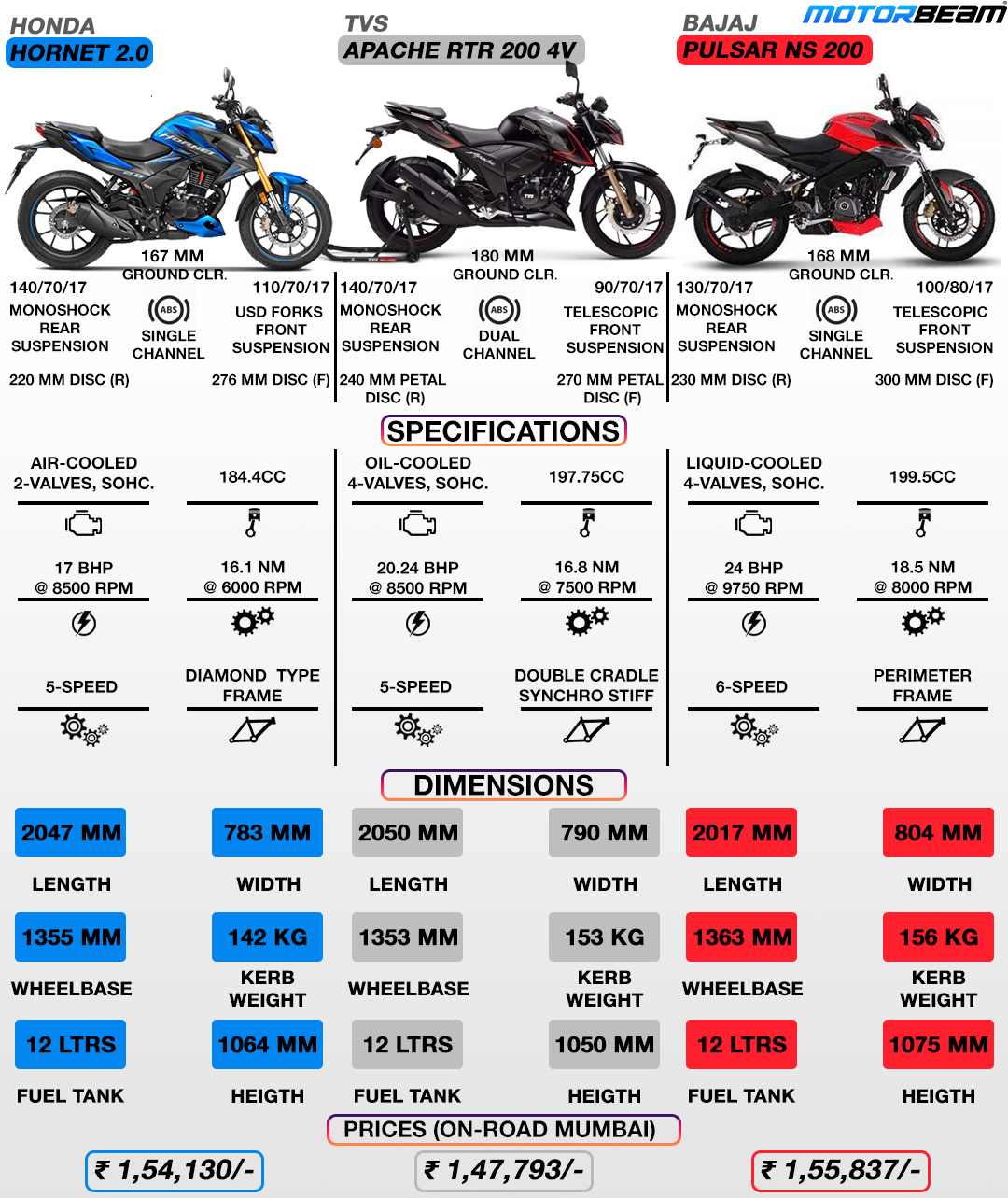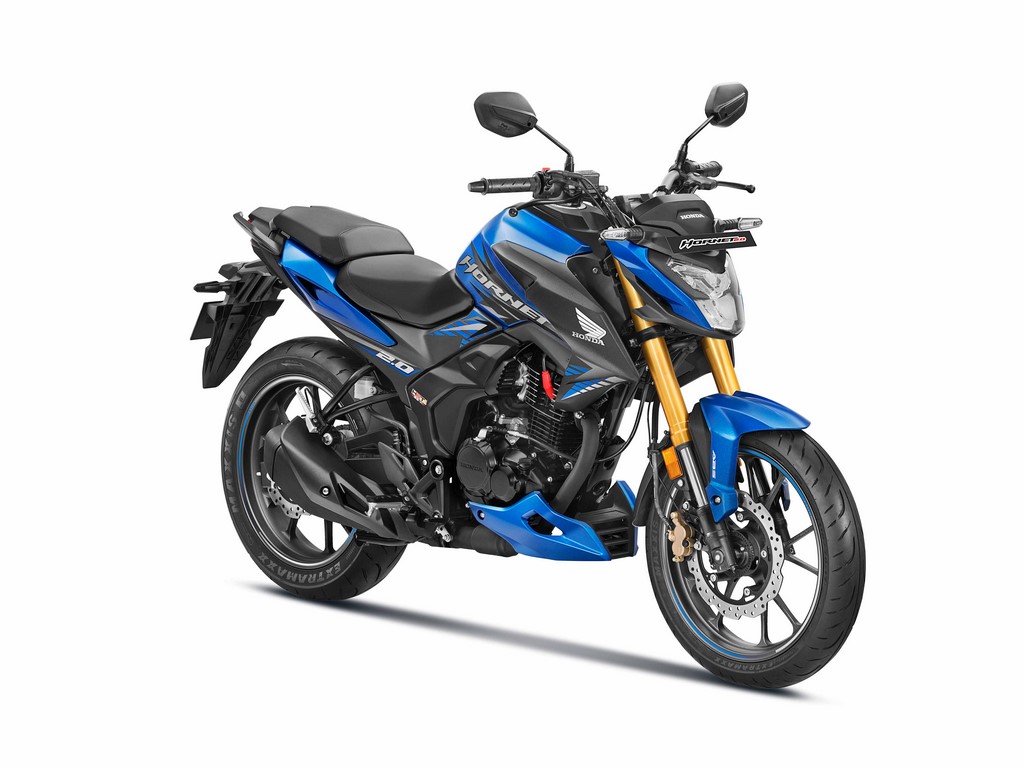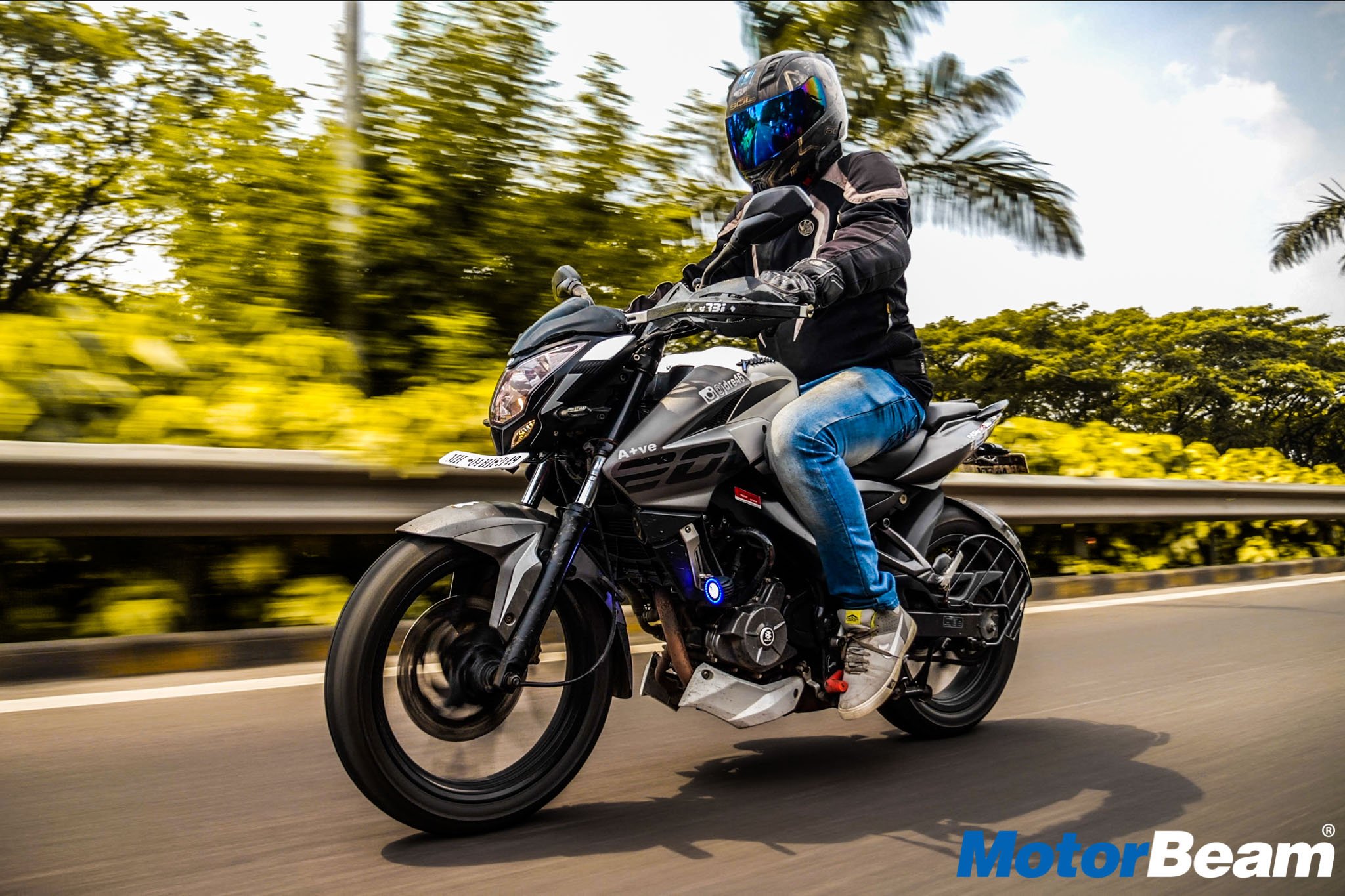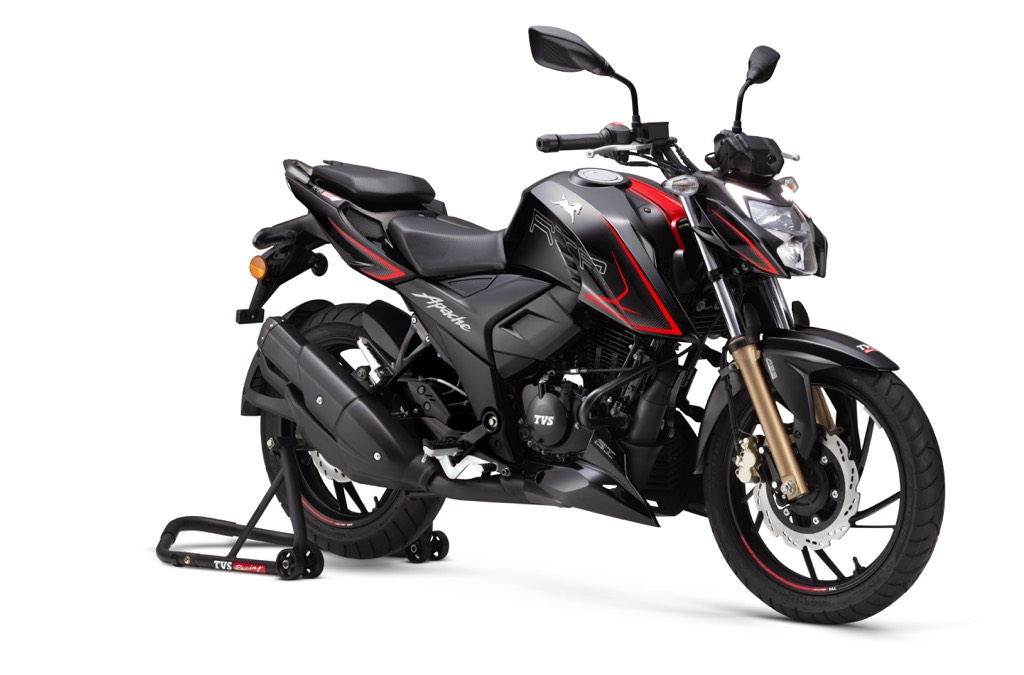Honda Hornet 2.0 vs TVS Apache RTR 200 vs Bajaj Pulsar NS 200 – Spec Comparison
We pitch the new Honda Hornet 2.0 against the TVS Apache RTR 200 and the Bajaj NS 200 in a spec comparison.
We pitch the new Honda Hornet 2.0 against the TVS Apache RTR 200 and the Bajaj NS 200 in a spec comparison.
Home » Bike News » Honda Hornet 2.0 » Honda Hornet 2.0 vs TVS Apache RTR 200 vs Bajaj Pulsar NS 200 – Spec Comparison

Honda recently launch the Hornet 2.0 as a successor of the previous-gen Hornet. While the bike is 180cc, the price is high so it lands right in the clutches of two bigger capacity bikes. The TVS Apache RTR 200 4V and the Bajaj NS 200 are the veterans in this class and are arguably among the highest selling motorcycles in the 200cc category. As many of you were keen to see how the Honda Hornet 2.0 fares in the market, we are putting the Honda Hornet 2.0 vs the TVS Apache RTR 200 vs the Bajaj NS 200 in a spec comparison.
We think everyone will agree that the Bajaj NS 200 feels the most dated here. The design of the NS hasn’t changed, and it still looks exactly like the first model. Then we have the TVS Apache 200, which has received some aesthetic updates over the years and looks fresh in its newest avatar. Some people might not like the way it looks, but looks are subjective after all. However, the Apache still doesn’t look too catchy, and it also shares its design with the smaller spec Apache 160, which might not be desirable for a few people.
This is where the Honda Hornet 2.0 shines. The Hornet is the newest bike in the lot, and it shows. The golden forks, aggressive graphics, a striking paint job and an edgy design all make the Hornet 2.0 a handsome lad and probably the best looking naked sub-250cc bike in the market currently. Even the previous-gen Hornet 160 was a good-looking motorcycle, and that is a key reason why the 2.0 looks great as well. The Hornet 2.0 is definitely the best looking in the lot, and it also feels more premium than the other two.
Just like the design, the Bajaj NS 200 suffers here as well. It misses out on some key features like a fully digital instrument cluster, LED headlamp, and LED DRLs. This is largely because the NS 200 has remained unchanged over the years. It comes with a semi-digital speedometer, halogen lights, halogen indicators, and a single-channel ABS. Coming to the other two, the TVS Apache 200 and the Honda Hornet 2.0 are closely matched as both have some interesting features. The common bits include a fully digital instrument cluster, kill switch, ABS, LED headlamp along with LED DRLs and an LED tail light too. However, the story doesn’t end here.
The Hornet 2.0 features USD front forks, which is a first-in-segment feature. This is by far the biggest USP of the new Hornet. Additionally, the Hornet also features LED indicators, a hazard light switch and a key on tank feature which is all missing on the Apache. But the Apache reels back some points with its practical features like Glide Through Technology, TVS’ Race-Tuned FI and a dual-channel ABS. In conclusion, both the Hornet 2.0 and the Apache 200 have a lot on offer while the NS 200 struggles here as well.
You don’t have to be a genius to figure out the bigger 200s will have better numbers than the smaller spec Honda Hornet 2.0. The Honda Hornet 2.0 features a 184.4cc motor with air-cooling, which makes 17 BHP at 8500 RPM and 16.1 Nm of torque at 6000 RPM. The TVS Apache 200 features a 197.75cc motor with oil-cooling and makes 20.24 BHP at 8500 RPM and 16.8 Nm of torque at 7500 RPM.
Finally, the NS 200 tops the charts as its 199.5cc engine with liquid-cooling makes 24 BHP of power at 9750 RPM and 18.5 Nm of torque at 8000 RPM. The latter two also share a 4-valve setup as compared to the twin-valve setup on the Hornet, which again justifies the unimpressive power figures of the Hornet. We dearly miss a 6th gear in both the Hornet and the Apache as both feature a 5-speed gearbox. Meanwhile, the NS 200 gets a 6-speed one. Lastly, the Hornet 2.0 will return better fuel economy than the other two, thanks to its smaller engine.
The TVS Apache RTR 200 and the Bajaj NS 200 feature clip-on type handlebars whereas the Hornet features a conventional handlebar. Consequently, the Hornet 2.0 has a more comfortable riding triangle, and this makes it a better commuter motorcycle. But the biggest thing that plays in favour of the Honda Hornet 2.0 here is its weight. At 142 kg, the Hornet 2.0 is 11 kg and 13 kg lighter than the TVS Apache 200 and the Bajaj NS 200, respectively. However, the Hornet has the least ground clearance at 167 mm as compared to the 180 mm clearance of the TVS and the 168 mm clearance of the NS 200. All motorcycles feature split-seat designs, and pillion comfort wouldn’t be stupendous on any of them. If you’re looking for a motorcycle for commuting duties only, the Hornet should be your choice with the Apache 200 in a close second.
This is the segment where we talk about the USP of the Hornet 2.0- the USD forks. The USD fork setup is a first-in-segment and will definitely improve the handling of the Hornet. Another thing that will help the Hornet handle better is the biggest front tyre in the lot. However, if you’re into sporty handling, the NS 200 and the Apache 200 will be better at it, thanks to their clip-on type handlebars and sportier riding triangles. The Hornet’s weight will result in a much more flickable and easy to handle motorcycle in the city, though.
Lastly, for stopping power, all motorcycles get front and rear disc brakes with ABS. While the NS 200 has the biggest front disc brake at 300 mm as compared to the 276 mm and the 270 mm disc brake of the Hornet and the Apache, respectively, the Apache is the safest motorcycle overall as it gets dual-channel ABS.
At Rs. 1,54,130 (on-road, Mumbai), the Honda Hornet 2.0 is a tad overpriced for its segment. After all, that is the reason we’re comparing it with 200cc bikes. But for the price, you get good equipment like a fully digital speedometer, USD forks, sporty graphics and top-notch looks. The low weight also makes the Hornet 2.0 a pretty good choice for commuting duties. However, at Rs. 1,47,793 (on-road, Mumbai), the TVS Apache RTR 200 is by far the best deal between the three. But for the highest performance, the Bajaj NS 200 at Rs. 1,55,837 (on-road, Mumbai) remains the top choice, even though it lacks some key features. Since we dig versatility and consider the VFM factor, we’ll choose the TVS Apache RTR 200 from this lot.



